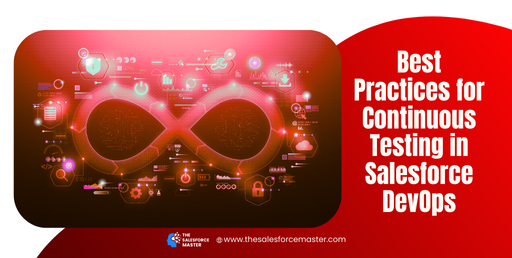
Best Practices for Continuous Testing in Salesforce DevOps
Continuous testing is a cornerstone of effective Salesforce DevOps, enabling teams to ensure software quality at every stage of development. By incorporating robust practices, organizations can accelerate releases, reduce errors, and maintain high performance.
Establishing a Comprehensive Test Strategy
A clear and comprehensive test strategy is essential for success. Begin by categorizing test cases into unit, integration, and regression tests to cover every layer of the Salesforce environment. Salesforce Login processes, critical workflows, and integrations should always be prioritized.
To ensure optimal coverage, follow these steps:
- Automate Routine Tests: Automation reduces manual effort and increases testing efficiency. Tools like Selenium or Provar can automate key workflows, including Salesforce Login validations.
- Incorporate Test Data Management: Using realistic test data improves the reliability of results. Keep Salesforce Marketer insights in mind to tailor test scenarios.
- Utilize Parallel Testing: Testing in parallel across multiple environments ensures quicker results and seamless integration with CI/CD pipelines.

Automating Testing in Salesforce DevOps
Automation plays a pivotal role in Salesforce DevOps. By leveraging testing frameworks and tools, teams can detect issues early, enhance quality, and save time.
Recommended practices for automation:
- Start Small: Focus on automating repetitive and high-impact test cases first, like Salesforce Marketer campaigns and Salesforce Login functionalities.
- Integrate Automation into CI/CD Pipelines: Seamlessly integrate testing into CI/CD workflows to catch errors before they impact the production environment.
- Monitor and Refactor: Continuously refine automated scripts based on feedback and changing requirements.
Testing tools such as Apex Test Execution and Salesforce Inspector offer valuable support for automated testing. When combined with Salesforce Marketer’s analytical capabilities, these tools provide actionable insights to optimize DevOps processes.
Keyphrases: Salesforce DevOps, CI/CD workflows, automated testing, test automation tools, Salesforce Login, Apex Test Execution, Salesforce Inspector, error detection, actionable insights, testing efficiency, Salesforce Marketer campaigns.
Continuous Monitoring and Feedback
Implementing a robust feedback loop ensures that issues are promptly identified and resolved. Salesforce DevOps relies on actionable feedback to maintain quality and speed.
Best practices for monitoring:
- Leverage Real-Time Dashboards: Tools like Salesforce Marketer and Tableau provide valuable metrics for monitoring test performance.
- Track Key Metrics: Focus on metrics such as defect density, test coverage, and Salesforce Login success rates.
- Encourage Collaboration: Teams should share insights from testing to improve workflows and reduce bottlenecks.
Regular feedback not only enhances test processes but also builds confidence in delivering exceptional user experiences.
Keyphrases: Salesforce Login, defect density, test coverage, feedback loop, Salesforce DevOps monitoring, real-time dashboards, actionable feedback, collaboration, Salesforce Marketer, Tableau metrics.
Conclusion
Continuous testing in Salesforce DevOps is critical to delivering reliable, high-performing applications. By adopting a strategic approach, automating processes, and monitoring performance, teams can achieve seamless integration and robust software quality. Incorporating Salesforce Marketer insights into the testing lifecycle further boosts efficiency and aligns outcomes with business goals.


